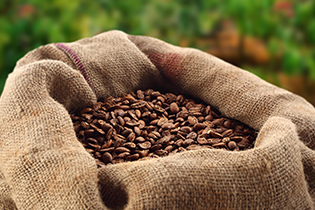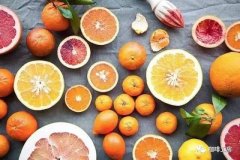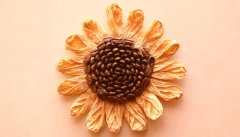Coffee Trade: advantages and disadvantages of Fair Trade and Direct Trade

For professional baristas, please follow the coffee workshop (Wechat official account cafe_style)
Coffee is the second largest commodity in the world after oil. Like other agricultural products, the price will follow? The harvest fluctuates. In order to maintain the livelihood of millions of people in the global coffee industry chain, since 1962, exporters and importers have participated in and formulated the International Coffee Agreement (International Coffee Agreement) to stabilize market supply with quotas.
The birth of Fairtrade stems from the promotion of handicrafts in developing countries by churches or charities. To participate in Fairtrade coffee, farmers must first pay to obtain certification and join recognized cooperatives to produce in certain environmentally friendly forms before they can be protected by a reserve price of US $1.40 (about HK $11) per pound. The cooperative society spends part of its income on community construction in producing areas to improve the living standards of farmers.
However, since the third wave swept the world, there has been a level called "boutique" in the pyramid of the coffee market. Coupled with the popularity of Cup of Excellence in coffee trials with a "blind test" score, coffee buyers have changed from buying raw beans from mixed farms to buying coffee on behalf of their reputations directly from winning farmers. Farmers are also gradually proud of their crops.
Win-win in direct trade
The benefits of this "direct trading" (direct trade) are win-win: higher incomes for farmers, more choices for bakers and better coffee for consumers. Shortening the industrial chain, the market pulse can be more easily transmitted to the upstream. Click me, a Central American farmer, once told me that direct trading is fairer than fair trade.
Most of the watermelons in the market are priced on the basis of jin, while the high-quality watermelons imported from abroad are of course calculated one by one. It is out of place to buy and sell boutique coffee in the same way as ordinary crops. The change in coffee trade reflects a change in the positioning of coffee in the market: from a refreshing cup a day to a work of art that can be appreciated.
As for Fairtrade, for example, a company that advertises "no sign" is already a trademark brand. Consumers satisfy the act of doing good by buying coffee at a higher price. The author believes that excessive goodwill may turn into charity. The agency that sets the reserve price is actually dominated by buyers in the northern hemisphere, and the price has not changed over the years, and it is not difficult to understand why.
Traditionally, coffee has been introduced to colonies in the southern hemisphere to supply rich countries, led by the northern hemisphere. This trend of "the north being superior to the south" has been followed. Farmers wake up and change. In the climate of globalization, it is easier for farmers to grasp the market price and taste than before; those with high-quality coffee are even less willing to fair trade, and they will fight for the ideal price through more channels.
The emperor's daughter is not worried about getting married.
Has Bean, a famous British baker, recently left a message on his blog: "the emperor's daughter is not worried about getting married!" The manor, which has been traded directly with us for several years, has made progress under our sincere treatment and careful communication, but he left me as soon as there was a market. " The problem of direct trading is revealed in one word: market supply and demand is realistic and there is no need for handouts. It can be predicted that the leading position of farmers will be further improved in the future trading mode.
Patrick Tam (owner of the boutique coffee shop Knockbox, approved barista of the American Fine Coffee Association and European Fine Coffee Association, CQI recognized cup tester, Cup of Excellence's first Hong Kong judge)
MING PAO ARTICLE
Important Notice :
前街咖啡 FrontStreet Coffee has moved to new addredd:
FrontStreet Coffee Address: 315,Donghua East Road,GuangZhou
Tel:020 38364473
- Prev

Coffee taste guide: coffee with sour is normal.
Professional baristas exchange please follow the coffee workshop (Wechat official account cafe_style), the pursuit of sweet and sour bitter balance since childhood to drink coffee in the restaurant, no matter what the price, grade of coffee, must be a little bitter. Children have the most frank taste buds and are mostly resistant to coffee. This is actually the nature of animals (innately aversive); poisons in nature, including caffeine, are
- Next

Kopi Luwak processing is innovative and Blue Mountain Coffee is famous for its producing area.
Professional barista communication please follow the coffee workshop (Wechat official account cafe_style) to give me the most beautiful cup of coffee! This is one of the most common problems encountered in boutique cafes. The speed of colleagues' answering is close to nerve reflex. Boutique coffee is as distinctive as a work of art. There is no prettiest, only taste. Acceptance of fruity or not is a good indicator of discrimination. Do not sell ordinary and the prettiest.
Related
- Beginners will see the "Coffee pull flower" guide!
- What is the difference between ice blog purified milk and ordinary milk coffee?
- Why is the Philippines the largest producer of crops in Liberia?
- For coffee extraction, should the fine powder be retained?
- How does extracted espresso fill pressed powder? How much strength does it take to press the powder?
- How to make jasmine cold extract coffee? Is the jasmine + latte good?
- Will this little toy really make the coffee taste better? How does Lily Drip affect coffee extraction?
- Will the action of slapping the filter cup also affect coffee extraction?
- What's the difference between powder-to-water ratio and powder-to-liquid ratio?
- What is the Ethiopian local species? What does it have to do with Heirloom native species?

